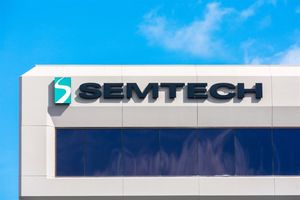Marin Katusa: The $480 billion robotaxi revolution is underway

Reprinted from the Katusa’s Investment Insights newsletter
In 1908, Henry Ford’s first Model T rolled off the assembly line. Within 20 years, the horse-drawn carriage industry vanished. Blacksmiths, stable operators, carriage makers, entire professions disappeared.
Today, a similar disruption is unfolding. Only this time, it’s measured in quarters, not decades.
On the last Sunday in June in Austin, Texas, Tesla launched its robotaxi service. Tesla CEO Elon Musk said on X the Tesla AI robotaxi launch began in Austin on Sunday afternoon with customers paying a $4.20 flat fee.
This wasn’t just a product launch. It was the starting gun for what McKinsey projects will become $378 billion to $486 billion in revenue for autonomous ride-hailing services in North America and Europe by 2035. That’s on just two continents. In one decade.
As the chart shows, China, Europe, Japan and the U.S. are all on track to see major growth by 2040.

Rapid adoption rates for autonomous vehicles are the key reason analysts project such huge revenue for robotaxis.
The safety numbers that changed everything
Look at the data that’s making this inevitable. Tesla demonstrated over 3.2 million miles per accident on Full Self-Driving (FSD) in 2023, outperforming human-driven Tesla at 588,000 miles and Waymo at 476,000 miles. That’s 5.4 times safer than human drivers, making insurance companies recalculate their entire business model.
But safety isn’t what’s driving adoption. Economics is. When you remove the driver, who takes 60%-80% of every fare, the unit economics transform completely.

While Tesla grabbed headlines last week, the real story is who’s already operating at scale. Waymo is already doing what Tesla’s aiming for. With over 250,000 fully autonomous rides happening each week across cities like San Francisco, Phoenix and Los Angeles. Think about that: 250,000 rides. Every week. No drivers.
Meanwhile, in China, the numbers are even more staggering. According to its IPO filing, Pony.ai operates over 250 robotaxi vehicles, with each vehicle completing an average of 15 orders per day.
A report from Huajin Securities indicates that Apollo Go has launched nearly 1,000 robotaxi vehicles across China, with its daily order volume in Wuhan now on par with local traditional taxis. In Wuhan, robots already match human taxi volume.
The manufacturing moat nobody’s discussing
Here’s what separates the dreamers from the dominators: scale. Waymo’s challenge isn’t technology, they’ve solved that. It’s manufacturing. Tesla’s advantage is that they already produce vehicles at massive scale. Tesla has mass-manufacturing capacity, and it pioneered remote software updates it can use for self-driving upgrades.

That’s why Volkswagen is entering the race too. The sector offers enough of an opportunity for Volkswagen to greenlight the production of at least 10,000 robotaxi vehicles, potentially more.
While American companies navigate regulations, China is deploying with military precision.
Pony.AI sold 20 million American depositary shares in the IPO, raising $260 million. It also raised an additional $153.4 million in concurrent private placement. The company achieved a $5.25 billion valuation on its first trading day.
WeRide, known for autonomous taxis, vans, buses and street sweepers, is testing and conducting commercial pilots in 30 cities across seven countries.
Robotaxi services were $2.6 million in the fourth quarter of 2024 for Pony.ai with revenue growth of 422.2% year-over-year.
The platform play everyone’s missing
The smartest move in this space isn’t building robots — it’s controlling distribution.
Uber said last week it was partnering with Pony AI to deploy the China-based robotaxi developer’s vehicles onto its ride-hailing platform. Uber is partnering with everyone, Waymo, Pony.ai, WeRide. They don’t need to solve autonomous driving … they already own the demand.
In 2022, the global robotaxi market size was valued at $1.76 billion, while the revenue growth expectation for 2030 is pegged at $98.59 billion, with a compound annual growth rate of 65.3%. That 65% CAGR assumes current regulatory frameworks. California just approved expansion, China’s racing ahead and Europe’s creating unified standards.
In July, Alphabet’s then-CFO, Ruth Porat, announced a multiyear investment by Google’s parent into Waymo on an earnings call, which amounted to $5.6 billion in total. Amazon’s Zoox is a ramping production. Chinese companies are raising hundreds of millions in U.S. markets.
Since launching in November 2019, WeRide’s robotaxis have completed 1,700 days of commercial operations on open roads in China and the Middle East without a single accident. Five years. Zero accidents. Millions of rides completed. The safety argument is over.
Waymo and Tesla both show lower crash rates than human drivers. But it’s important to know that Tesla’s system is Level 2 (driver still needed), while Waymo is Level 4 (fully driverless). This makes Waymo’s safety record even more impressive.
The robotaxi investment landscape so far
Pure plays:
- Pony.ai — $5.25 billion valuation, 422% revenue growth
- WeRide — $4 billion valuation, operating in 30 cities
Platform aggregators:
Manufacturing scale:
- Tesla TSLA — Early stages but massive production capacity
- Volkswagen – 10,000 unit commitment
Dark horses:
- Amazon AMZN — Zoox targeting 10,000 units/year
- Baidu – 1,000 vehicles already deployed in China
Not every player survives. GM poured $10 billion into Cruise before retreating and Tesla faces federal probes over FSD crashes in bad weather.
But this isn’t about whether robotaxis will transform transportation. They will. The only questions are: How fast? Who wins? What dies?
Robotaxi timeline reality check
Analysts and industry experts note that establishing robotaxis may still take years, primarily due to the challenges of ensuring safety and reliability. Some analysts believe Tesla can expand faster, in part because Waymo has helped pave the way by overcoming regulatory and technical challenges. Waymo spent 15 years solving the technology and now everyone’s copying the playbook.
By 2027, major cities will have thousands of robotaxis. By 2030, urban car ownership becomes economically irrational. The race has started at $4.20 a ride.
Where it ends will create the biggest transportation fortunes since the railroad barons. Will you participate or watch?
More Marin Katusa: Bitcoin custody coup rewiring global finance
More News
View More




Recent Quotes
View More
Quotes delayed at least 20 minutes.
By accessing this page, you agree to the Privacy Policy and Terms Of Service.